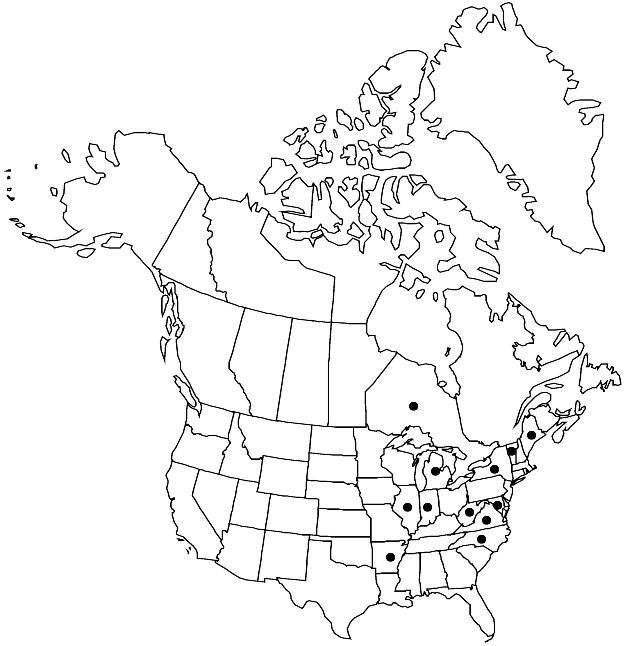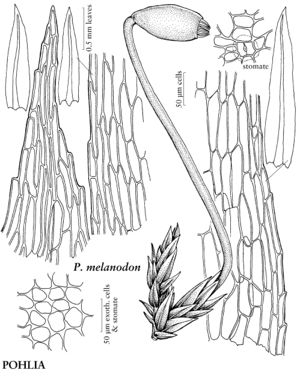Difference between revisions of "Pohlia melanodon"
Bryologist 84: 506. 1982.
FNA>Volume Importer |
imported>Volume Importer |
||
| Line 64: | Line 64: | ||
|publication year=1982 | |publication year=1982 | ||
|special status=Illustrated | |special status=Illustrated | ||
| − | |source xml=https:// | + | |source xml=https://bibilujan@bitbucket.org/aafc-mbb/fna-data-curation.git/src/bb6b7e3a7de7d3b7888a1ad48c7fd8f5c722d8d6/coarse_grained_fna_xml/V28/V28_338.xml |
|genus=Pohlia | |genus=Pohlia | ||
|species=Pohlia melanodon | |species=Pohlia melanodon | ||
Revision as of 22:44, 27 May 2020
Plants small, dark green, not glossy. Stems 0.3–1 cm. Leaves erect-spreading to spreading, lanceolate to ovate-lanceolate, 0.7–1.3 mm; base not or scarcely decurrent; margins weakly serrulate in distal 1/3; apex acute or short-acuminate; costa ending well before apex; distal medial laminal cells laxly and broadly rhomboidal, 60–100 µm, walls thin. Specialized asexual reproduction absent. Sexual condition dioicous; perigonial leaves ovate; perichaetial leaves scarcely differentiated, lanceolate. Seta orange-brown. Capsule inclined ± 180°, brown to red-brown, sometimes stramineous, short-pyriform to urceolate, neck less than 1/3 urn length; exothecial cells isodiametric, walls sinuate; stomata immersed; annulus absent; operculum short- to long-conic; exostome teeth dark brown to red-brown, triangular-acute; endostome yellow to yellow-brown, basal membrane 1/2 exostome length or slightly longer, segments tapered apically, distinctly keeled, broadly perforate, cilia long, nodulose. Spores 13–18 µm, finely roughened.
Phenology: Capsules mature spring (Apr–Jun).
Habitat: Disturbed clay or rarely sandy soil, path banks, along streams
Elevation: low elevations
Distribution

Ont., Ark., Ill., Ind., Maine, Md., Mich., N.Y., N.C., Vt., Va., W.Va., Europe.
Discussion
Pohlia melanodon has soft, dark green, rather broad ovate-lanceolate leaves with lax, thin-walled cells. The species does not produce elongate sterile cushions as does P. wahlenbergii; even when sterile, the plants have short stems and are rather densely leafy. Pohlia melanodon is more common in eastern North America than collections indicate; it is often sterile and for that reason rarely collected. The exothecial cell walls of capsules of this species are somewhat collenchymatous.
Selected References
None.
